An upper class early 16th century German Unterrock (kirtle) with a brocade hem, to support a noble class gown.
I needed a new underdress to provide support and shaping under my planned pink brocade gown. I had decided to make the whole outfit out of stash, so my choice of fabrics was limited…
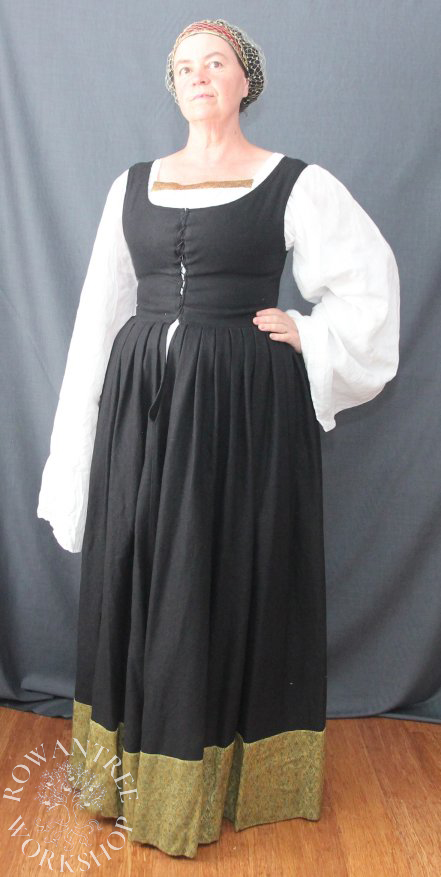
Research and Design
I believe that many of the early 16th century German gowns we see were worn with a sleeveless underdress. It is clear that at least middle class and noble women are wearing another layer of skirts beneath their gowns, often with a decorative border, as can be seen in this painting by Baldung Grein.
Although these could be petticoats (from the waist), it makes sense to use this under layer to provide support and shaping for the outer layer – especially for those of us no longer young and slim. There are a few examples where the strap can perhaps be seen beneath the gown and Hemd, such as the portrait by Peter Gärtner.

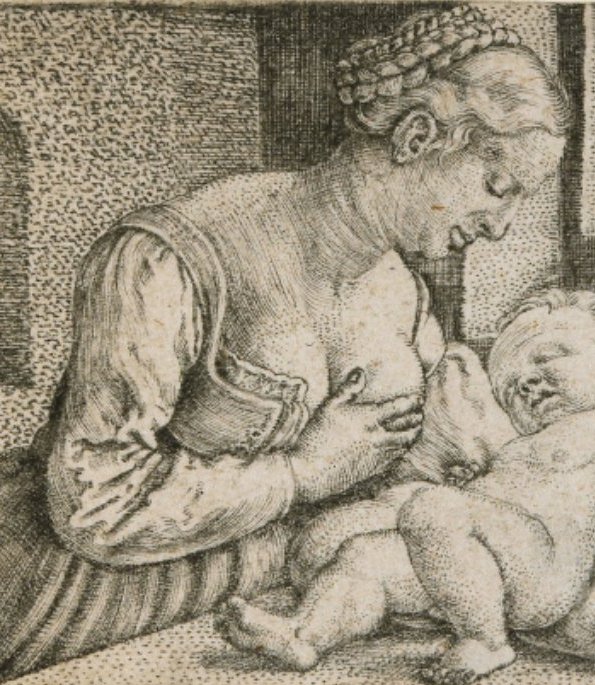
Source: British Museum
We also see women in sleeveless gowns in hot or messy situations situations such as childbirth, washing clothes and working in the fields. But we do not see this style worn as normal dress when out on the town – or even at a village dance, or on the campaign trail.
So – I believe these images of sleeveless Rocks to be Unterrocks.
Construction
First, the pattern. The main purpose of this Unterrock was support. Since the shoulders would be well hidden, I went for wider straps than is seen in the images. I patterned the bodice to be tight, making sure to stay-stitch the neck and armscye before fitting the toile to avoid bias stretch. I laced my test version up the front with heavy thread (pins cannot stand this sort of strain!) but knew it would need further fitting.
Since I was making this out of stash, my choices were limited. I had some heavy soft black linen, but not quite enough. To make the most of the limited fabric, I pieced the skirt, as is often seen in 16th century tailor’s manuals such as Alcega (1979) and in Drei Schnittbücher (Barich & McNealy 2015). Two pieced drops gave me a hem area of 4.5m.
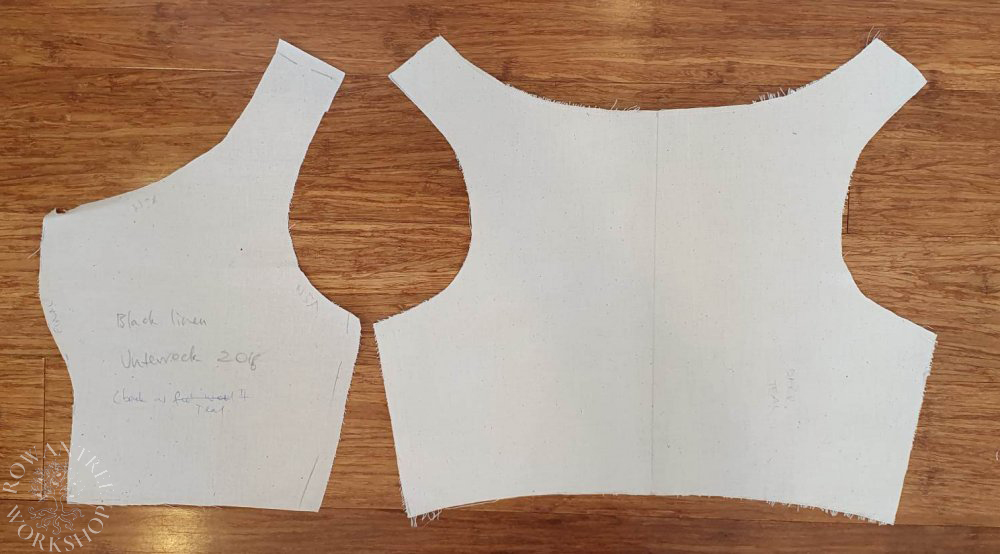


Still not enough fabric – so, a deep band of lush fabric, as seen is so many portraits. None of my brocades were right, so I overdyed some yellow polycotton brocade with black dye (also in stash). The dye worked well and brought out the pattern, even if the result looked more green than black.
I cut the bodice from canvas, heavy linen and lighter lining lining. I basted the linen to the canvas, sewed the seams and pick-stitched them flat. For a neat finish and maximum strength, I bound the neck and armscye in a straight strip of the same linen, before re-fitting the front.
Lacing with a heavy needle and strong thread showed how much more I needed to take off! Once trimmed, I sewed a piece of twill tape down the front edges of the canvas to support the eyelets and spread the strain. (And I updated my pattern with the new shape).
I bound the front edge and worked eyelets down the front through all layers. I turned up the bottom hem and catch-stitched it to the canvas, then lined the bodice in light linen.
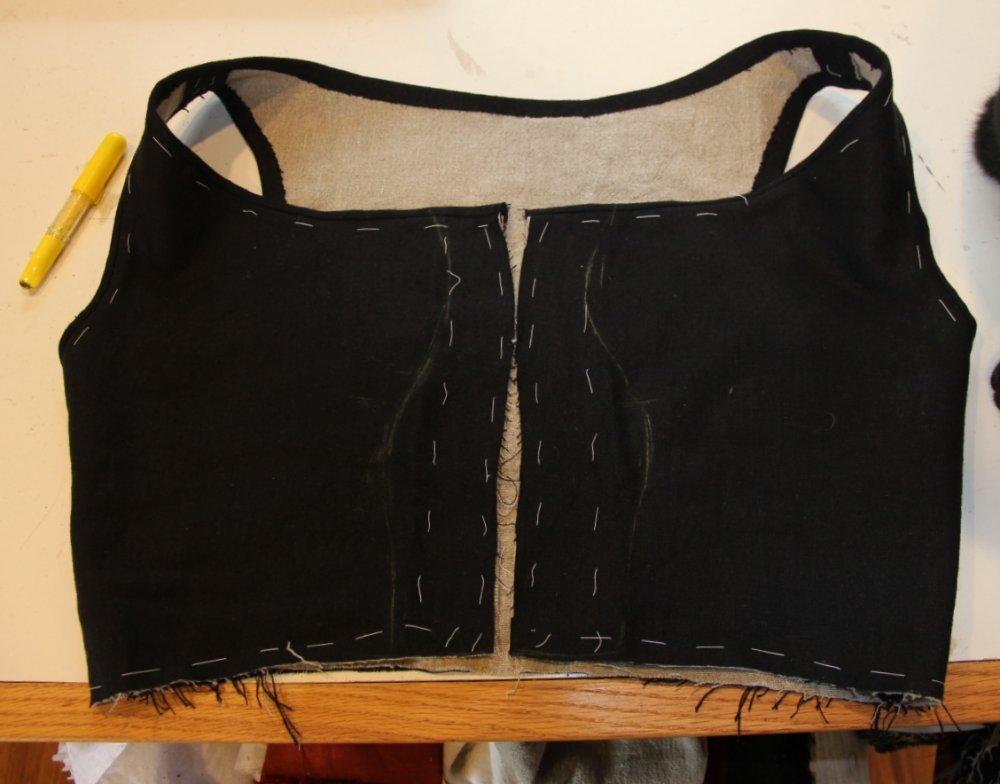

On to the skirt. I sewed and flat-felled the seams, then smoothed the hem before adding the deep brocade guard. I faced the top of the skirt in light linen, then box-pleated the skirt to the bodice, over-sewing on two passes. I tried on the Unterrock, then turned up the brocade guard and lined it to finish.
The finished Unterrock provided excellent support, is comfortable to wear all day – and means the actual Rock can sit lightly, with no strain. I formed a brass aglet on the lacing to make it easy to lace.
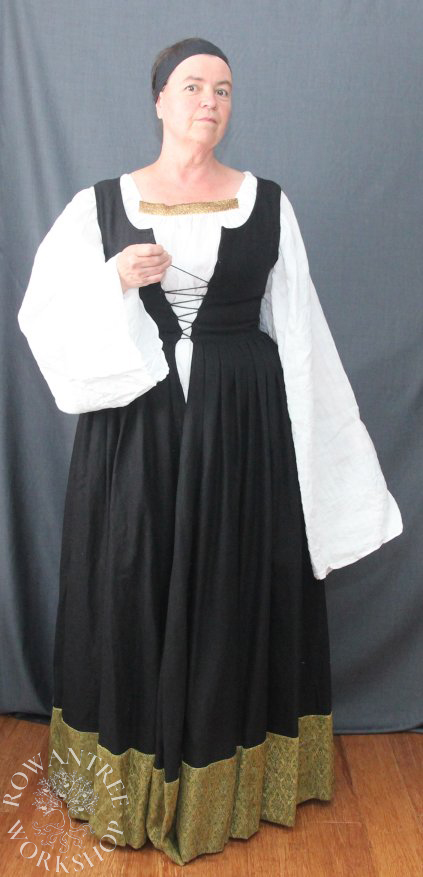


Afterthought
This proved such a success – comfortable and supportive, even after wearing all day. So when I decided to refresh my middle class wardrobe, I knew the first step would be a new Unterrock…

